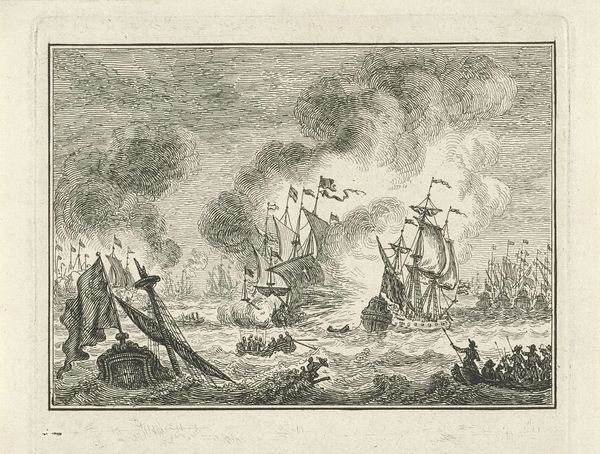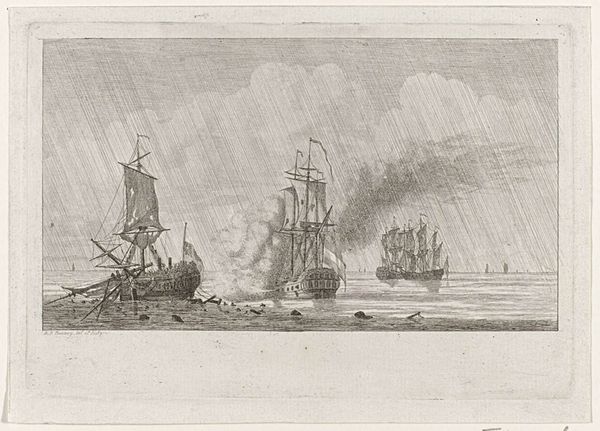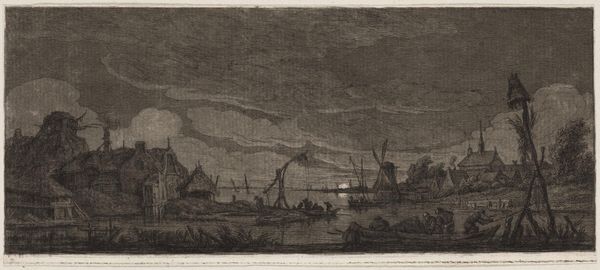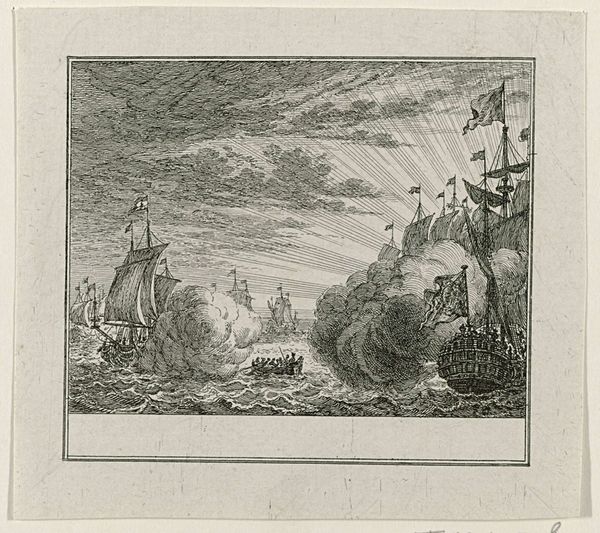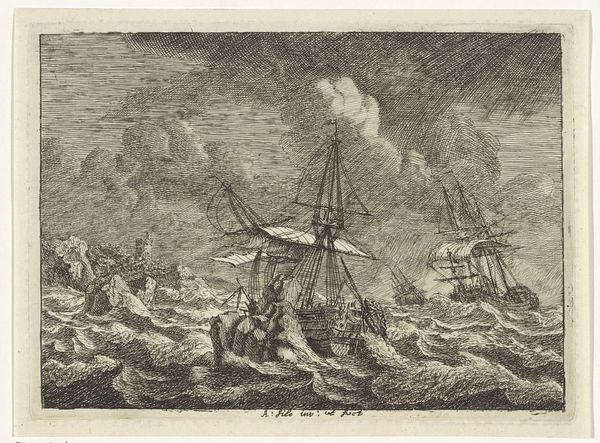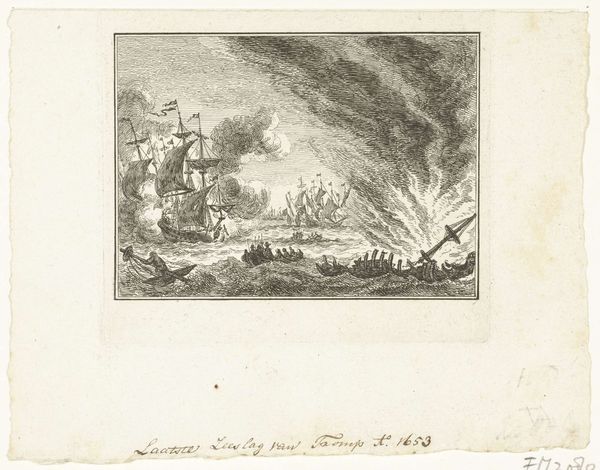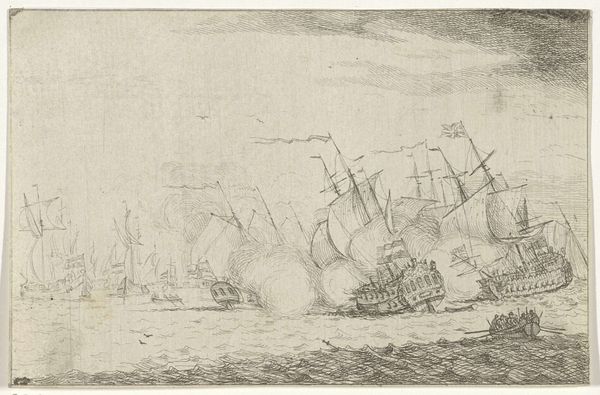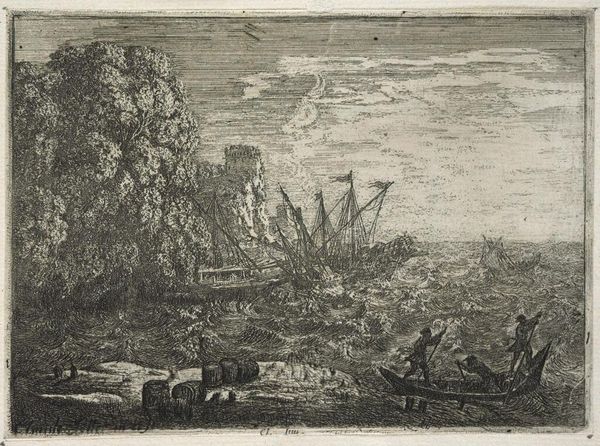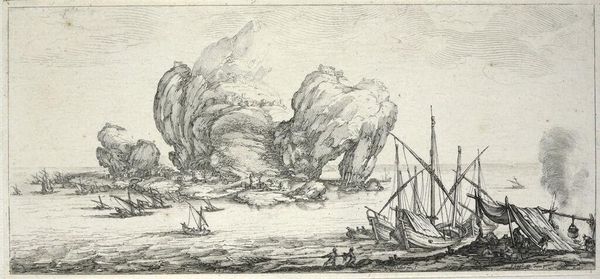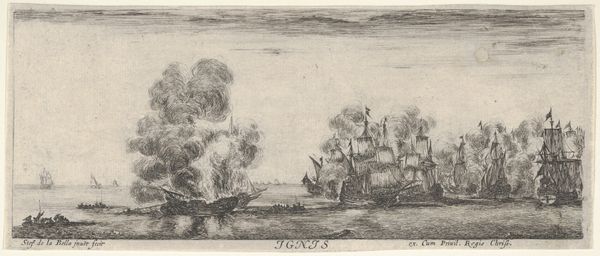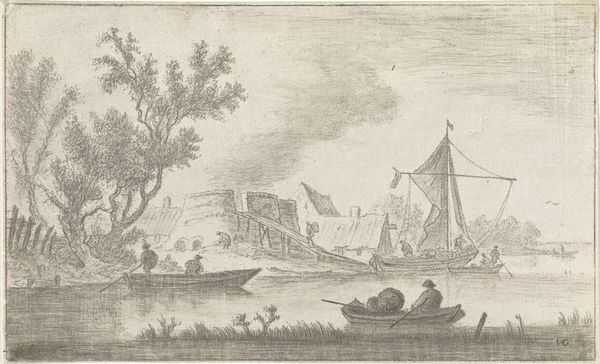
print, etching
#
baroque
# print
#
etching
#
landscape
#
cityscape
Dimensions: height 145 mm, width 232 mm
Copyright: Rijks Museum: Open Domain
Curator: This etching, entitled "Seascape by Moonlight," is attributed to Matthieu van Plattenberg and likely dates sometime between 1617 and 1660. Editor: Immediately, I’m struck by the way the stark contrast gives the scene a haunting quality. It’s a very theatrical use of light, isn’t it? Almost like a stage set. Curator: Indeed. Plattenberg, who was also known as Montaigne, certainly understood the dramatic potential of the etching process. If we consider the time and effort required to create this image--the careful scoring of the metal plate, the acid bath, the multiple proofs--we can understand that producing images such as this would likely find eager audiences for a reasonable price. Consider the material conditions, which meant the democratization of image distribution! Editor: I'm also interested in how it reflects broader shifts in social power. Here we have these grand ships juxtaposed against a common labour activity on the shore line, all set under this vast moonlight, which reduces everything to its most dramatic form. Was it perhaps tapping into a new public appetite for dramatic naval imagery? Curator: Very astute! The presence of cityscapes hints to larger questions of trade, class and even geopolitical strategies. The fact that print-making makes this view and message so reproducible points to the rising role of mercantilism and urban hubs for economic activity. I find myself pondering the labour and industrialization that underpins the marine endeavors and trading posts depicted on the scene. Editor: And thinking about the market, it is possible the very affordability of prints like this might have contributed to a burgeoning sense of national identity by circulating consistent images of a powerful maritime presence. Curator: Yes, absolutely! When considered alongside of the economics of printmaking at this time, it provides valuable insights into socio-political landscape of 17th-century maritime culture. Editor: It is interesting how something created with this material method allows insight into a world of cultural perception and dissemination of imagery in its own time!
Comments
No comments
Be the first to comment and join the conversation on the ultimate creative platform.
